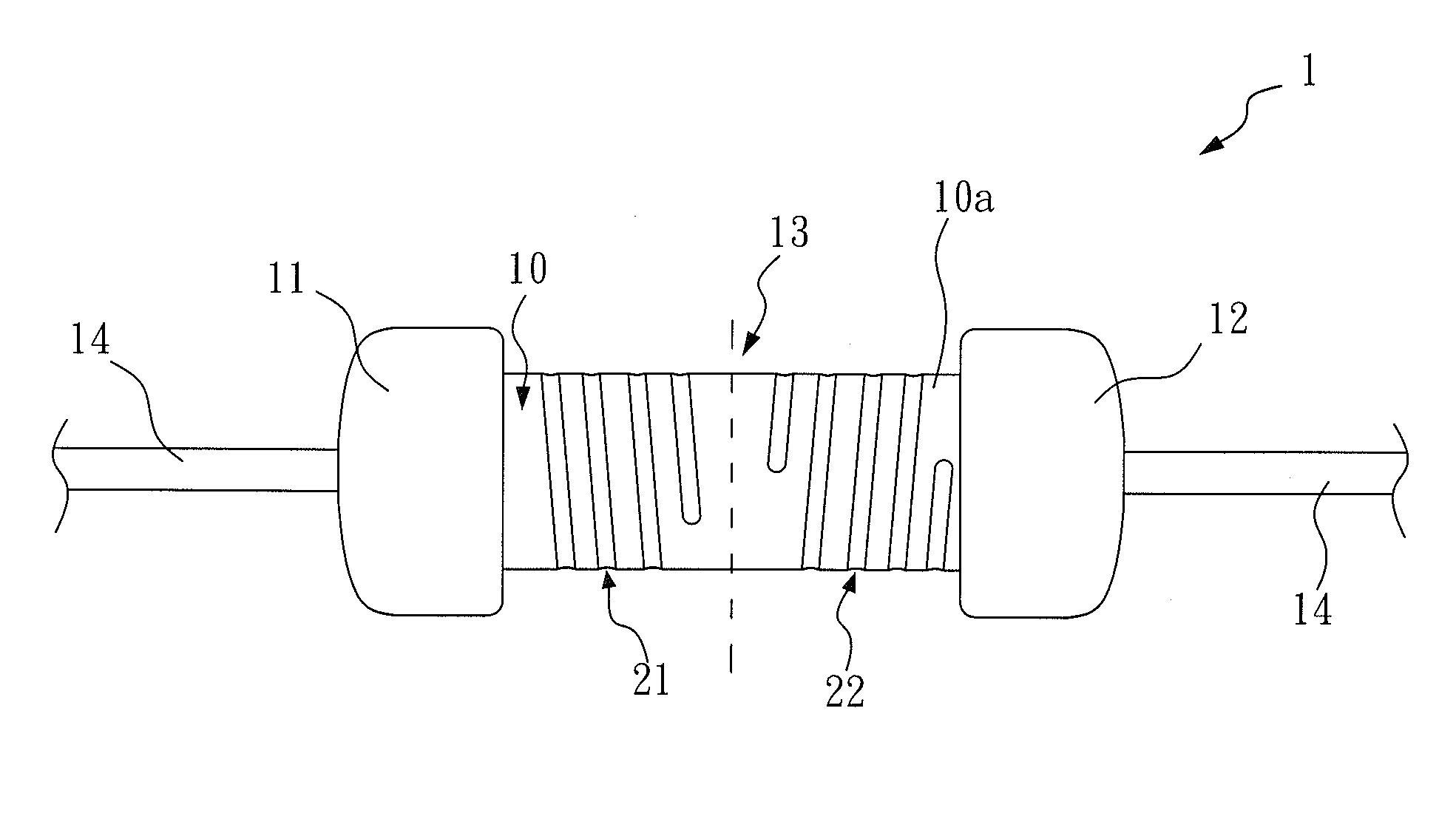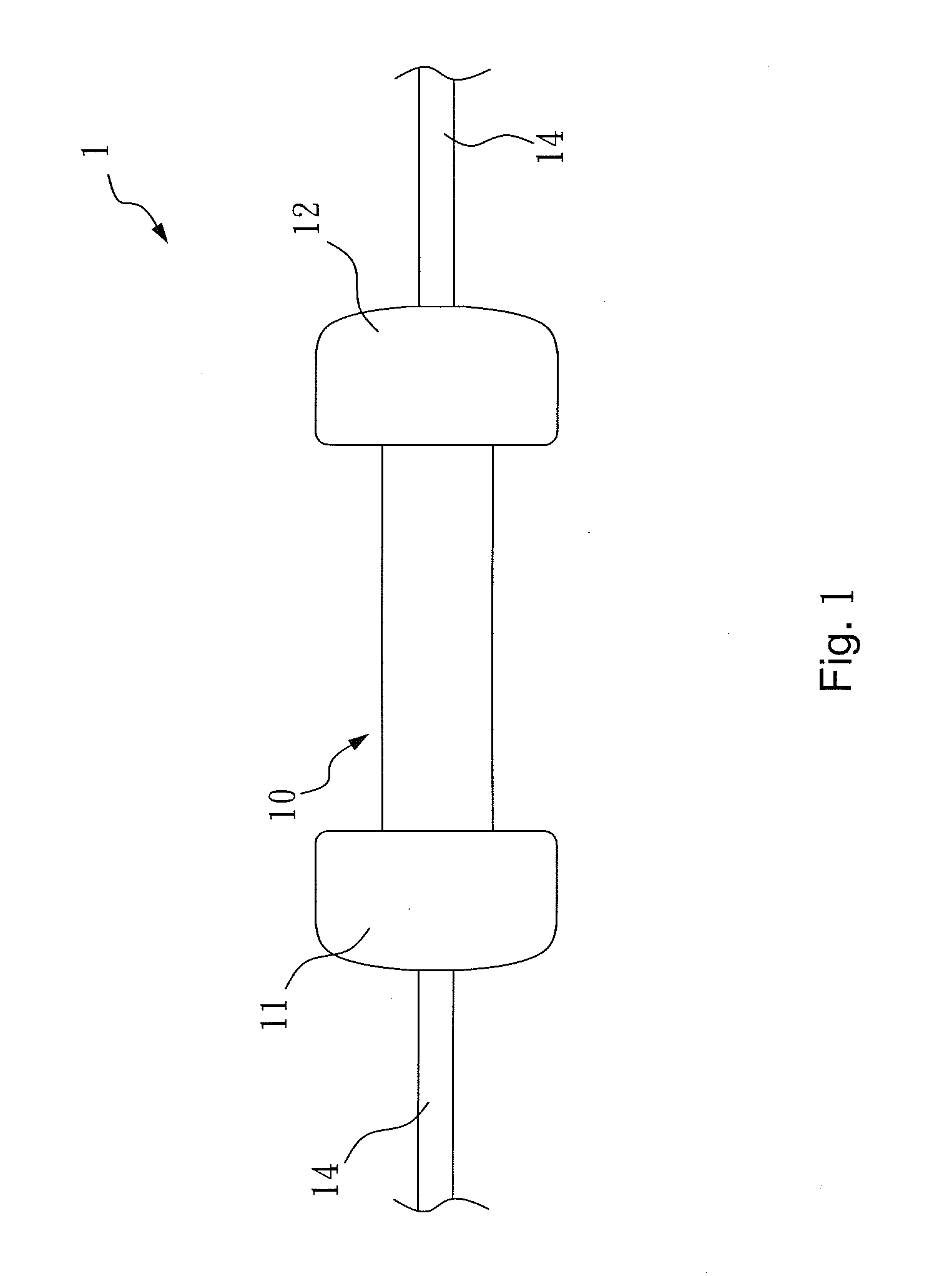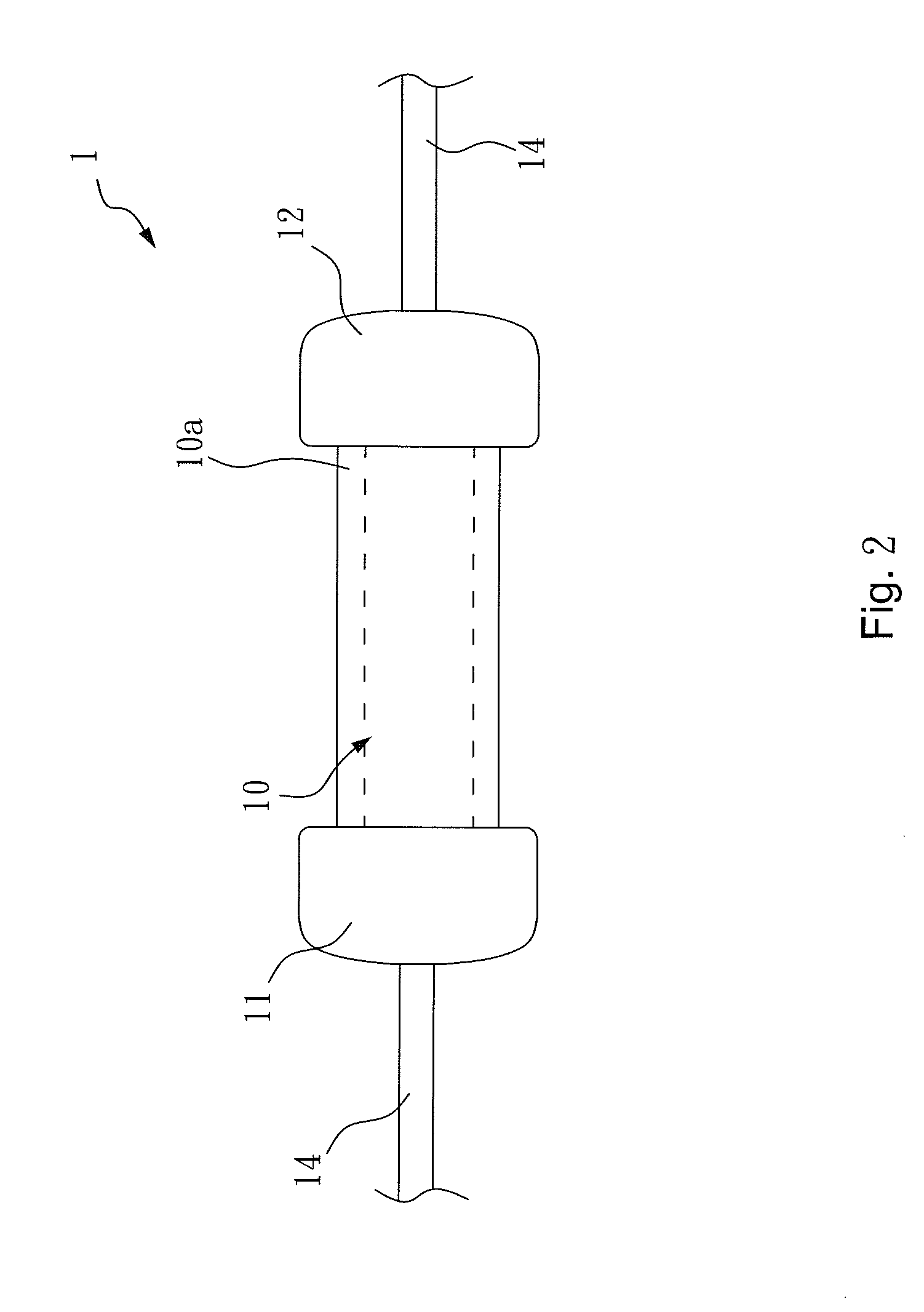Non-Inductive Resistor and the Manufacturing Method Thereof
a manufacturing method and resistor technology, applied in the direction of resistor manufacturing, adjustable resistors, resistors, etc., can solve the problems of noise generation, undesirable noise, and noise produced by inductance effects
- Summary
- Abstract
- Description
- Claims
- Application Information
AI Technical Summary
Benefits of technology
Problems solved by technology
Method used
Image
Examples
Embodiment Construction
[0020]The advantages and innovative features of the invention will become more apparent from the following preferred embodiments.
[0021]Please refer to FIG. 1, FIG. 2 and FIG. 3 of the non-inductive resistor of the present invention. FIG. 1 is a diagram of the rod. FIG. 2 is a diagram of the conductive layer covering the rod. FIG. 3 is a diagram of the non-inductive resistor.
[0022]The non-inductive resistor 1 of the present invention is a film type resistor. The non-inductive resistor 1 comprises: a resistance rod 10, a conductive layer 10a, a clockwise cut mark 21, and a counterclockwise cut mark 22. As shown in FIG. 1, the resistance rod 10 comprises a first end 11 and a second end 12. The first end 11 and the second end 12 are mounted on the end cap by gluing or welding, and are respectively connected to a metallic conducting wire 14, thus enabling the non-inductive resistor 1 to be electrically connected to an outer electrical component (not shown).
[0023]As shown in FIG. 2, the r...
PUM
| Property | Measurement | Unit |
|---|---|---|
| resistance | aaaaa | aaaaa |
| conductive | aaaaa | aaaaa |
| inductance | aaaaa | aaaaa |
Abstract
Description
Claims
Application Information
 Login to View More
Login to View More - R&D
- Intellectual Property
- Life Sciences
- Materials
- Tech Scout
- Unparalleled Data Quality
- Higher Quality Content
- 60% Fewer Hallucinations
Browse by: Latest US Patents, China's latest patents, Technical Efficacy Thesaurus, Application Domain, Technology Topic, Popular Technical Reports.
© 2025 PatSnap. All rights reserved.Legal|Privacy policy|Modern Slavery Act Transparency Statement|Sitemap|About US| Contact US: help@patsnap.com



